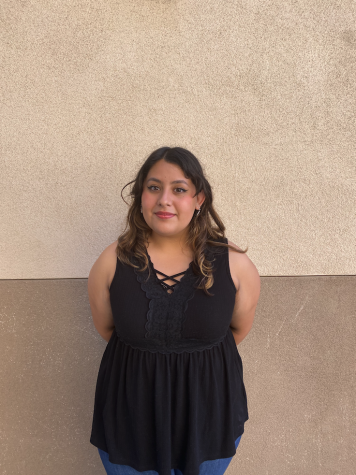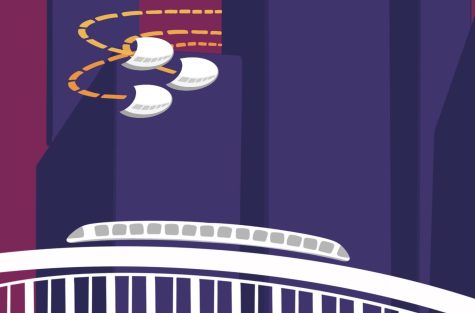FHS ELD suffers from insufficient resources
Due to the ongoing political and economical crisis in central and south america. there has been an influx of people into the US. According to the California Education Department, there are 235,442 ELD students statewide—a 7% rise since last year.
FHS plays host to a myriad of these communities across economic and class boundaries. As a result of this, FHS’s English Learning Development community has subsequently grown. ELD students account for 19% of the school population, but the program is limited. Out of 116 teachers, 12 teach in the ELD program.
ELD classes are designed for students who are still developing their fluency in English. These classes are separated by fluency and there are 3 sections: ELD 1, ELD 2 and ELD 3. ELD 1 is a beginner class for students with minimal english fluency. However, the ELD program faces a challenge different from other high school classes: lack of educational experience. Some students that join FHS’s ELD program have never attended school and are not literate in their native language. By default they are put in ELD 1 with students that already have traditional school experience. This disparity makes it difficult for students to excel.
“It’s hard for me to learn in my class,” freshman ELD student Mei Conteras Medez said. “A lot of my classmates struggle with the class and we have to slow down.The work is too easy for me and I feel like I’m not learning anything.”
Class options across subjects are limited, and students are often lumped together into a singular class. According to Michelle Wagner, who teaches the sheltered biology class, this poses a challenge.
“I think the challenge with ELD is, not only is every student a different student, but they’re all at different language levels,” Wagner said.
These different language levels in one singular biology class means that students with minimal english fluency will struggle to understand the material and pass the class, leading to lower graduation rates among ELD students. According to the 2021 FHS WASC report, only 58% of ELD high school students graduated.
One of the main issues between the non ELD students and those in the ELD program is the lack of class options. There are limited class options and nearly no options for electives besides art and culinary. ELD students are also put in extra support classes such as ELD C to fill up their schedules despite some of them not needing the extra support.
“It’s a bit of a tragedy that we funnel[ELD students] into the same ceramics, and if they’re lucky, art,” ELD English teacher Amy Gibson said. “We literally have no other electives.”
When these electives are full, which is a common occurrence, they get put into Music Theory.
“Mr. Howard is absolutely giving it his best effort,” Gibson said. “But that class…was never designed for students who don’t speak English, because it’s not even playing music. It’s learning about the theory behind music, but we have nowhere else to put students.”
ELD students are being put at a disadvantage with limited opportunities to excel. Resources are stretched thin and the influx of students keeps rising, with FHS ELD teachers continuing to fight for more resources.
“But every spring, we have to fight to get the number of sections that we need,” Gibson said. “Because the numbers aren’t there in the moment when the district is allotting sections and deciding how to divide up this money.”
I-Heng McComb, who teaches ELD Math, specifically pointed out the issue with increased student populations during the middle of the year and yet again, struggling to accommodate different skill levels.
“I think I added something like seven or more students in the last two weeks of the semester,” McComb said. “And then in the opening semester, every day, there’s a new student. [For]the [large] numbers of students that are coming in either at the very end of first semester, or now, it’s really hard for them to catch up.”
According to Wagner, higher funding would assist the ELD program in providing increased class options, simultaneously lowering the class sizes.
“We would use that money to have more classes for the students with different language levels,” Wagner said. “So there could be a biology [class] for students with higher language levels and a biology [class] for students who are still just really at the beginning stages of learning the language. I think just more classes is important, and I think really controlling [the] class size is important.”
According to Gibson, this disparity is in the hands of the district, who has neglected its most vulnerable students.
“We as a school and more specifically, as a district, we are failing the students,” Gibson said. “We are not living up to what we are legally required to give them.”
Without parents to advocate for them, the responsibility falls on their overburdened teachers, says Gibson.
“[ELD students] don’t have parents who march into the office and fight for their kid,” Gibson said. “They have parents who will fight for their kid, but they’re fighting for their kid by walking the length of Mexico to get here. They’re fighting for their kid by working three jobs. They’re fighting for their kid by scraping together whatever money they can pay a coyote to then say goodbye to their kid and not know if they will ever see them again. That is a much bigger fight than me firing off an email because I’m mad about the way my kid was treated by their teacher or I’m mad about a grade that my kid received from their teacher, but they don’t have a voice in terms of being a loud parent.”














Peggy Shen Brewster ~ Feb 8, 2023 at 10:25 pm
Hello! This is a great article and very well written. Thank you for sharing this issue. I’m part of Sunnyvale for Equity in Education (SEE), a new advocacy group identifying and addressing inequities just like these you’ve written about here. I would love to connect with Minerva, Jael, or any other student involved in this article. Could you please email me?
Eileen Le ~ Feb 8, 2023 at 5:45 pm
Well done! Great job reporting on this urgent and important issue.